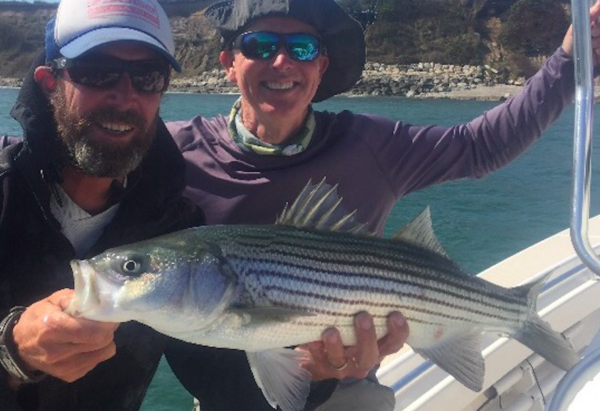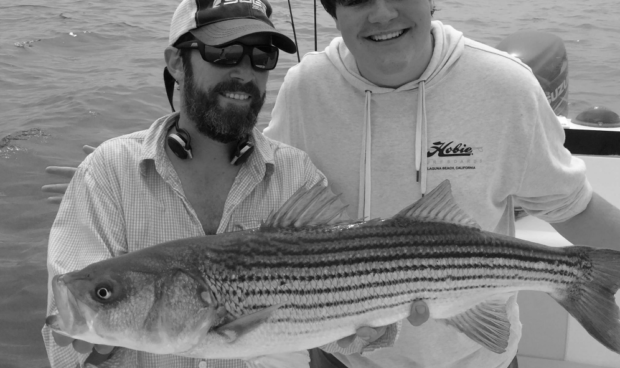By Capt. John McMurray for American Salwater Guides Association
Striped Bass
[dropcap]N[/dropcap]o matter how you cut it, things went bad here.
Just to recap, the striper stock is “overfished” and “overfishing” is occurring. What that means is that we are above a fishing mortality threshold and under a female spawning stock biomass threshold set by scientists.
As a result, the Commission’s Striped Bass Board initiated Addendum VI, which requires an 18% reduction from 2017 removals.

A bass this size will fall within the slot. Photo: Derr
The first decision point on the Addendum was whether or not to require equal reductions from both the commercial and recreational side, or “proportional” reductions based on the amount of fishing mortality each sector was responsible.
Option 2 required equal 18% reductions.
Because the recreational side is responsible for 90% of removals and the commercial side 10%, Option 3 would have required a 20% reduction on the recreational side, and a 1.8% reduction on the commercial side.
Option 2 won the day, with the great majority of the Commissioners voting in favor if it. Some reasons for support included that this is a shared resource – all sectors should do their fair share to end overfishing and to rebuild the stock. Under option 3, ninety-nine percent of the conservation burden would be on a sector that is responsible for only 90 percent of the mortality. And, that such option would effectively reflect a reallocation.
Next, the Commission dealt with size and bag limit alternatives. Despite the fact that the great majority of the public had clearly advocated for the most conservative, time-tested option – 1 fish per angler at 35” – the board voted for what we consider to be the most risky option of 1 fish from 28 to 35”.
For sure there could be some benefit to protecting all those larger, older fish, north of 35”, but from a practical perspective, it makes little sense to focus fishing mortality on the handful of year class that fall within that 7” slot limit.
One of the main arguments for such a slot is that it would still allow anglers to take home a fish, while protecting a significant amount of the older, larger fecund females. A few things here though. The entire point of the Addendum was to reduce fishing mortality. In other words, the intent is to make it more difficult to bringing home a fish. But also, if all the fishing mortality is focused on those smaller fish, well, a lot of, perhaps most fish won’t make it to the 35”-plus safe zone, rendering any conservation benefit moot. Also, it’s pretty clear that discard mortality (those fish that die after release) is considerably higher on those older, larger fish. None of all this was considered in staff’s analysis. Lastly, the public comment period made it pretty clear that the majority wanted one fish at 35”.


